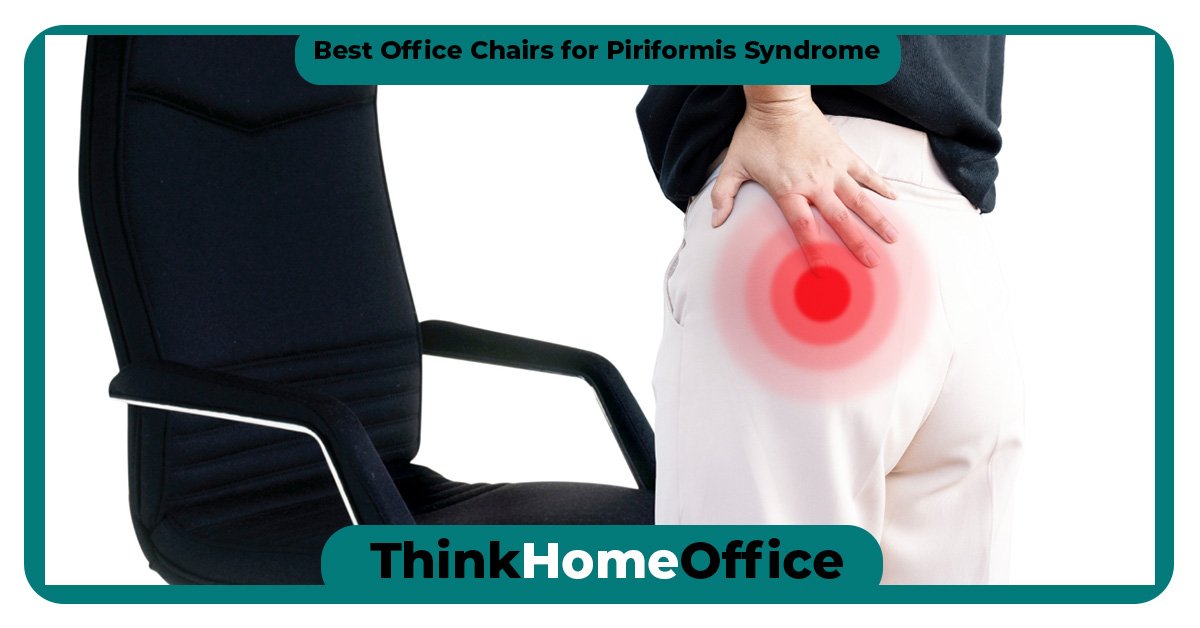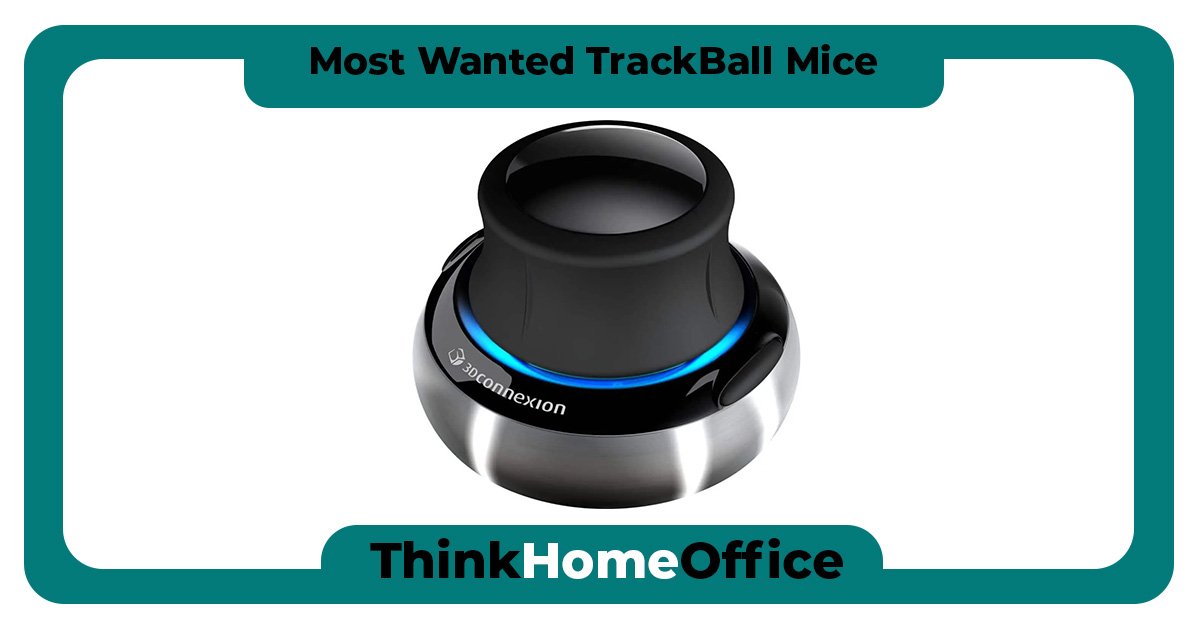Piriformis Syndrome is a unique medical condition affecting the Piriformis Muscle located in a persons rear – the buttocks. It is a rare neuromuscular disorder that happens when the piriformis muscle compresses the sciatic nerve, the largest nerve in the body. This compression which is often exacerbated by prolonged sitting can cause a a range of discomfort, which can include: persistent lower back pain, numbness in the buttocks, and tingling sensations down the leg. Getting the best chair for piriformis syndrome will help alleviate this discomfort!
Tip: Use the Article Contents to quickly view the Sections of this article.
Understanding Piriformis Syndrome
Those with Piriformis Syndrome often experience increased discomfort when sitting for protracted periods of time, making it essential to find a chair which can encourage good posture to reduce pressure on the affected area.
Thus, it is essential that individuals with Piriformis Syndrome choose an office chair designed to provide optimal support and alleviate discomfort. In this comprehensive guide, we delve into the top three office chairs specially designed for Piriformis Syndrome sufferers, underscoring their unique benefits over their competition.
Dealing with Piriformis Syndrome
Piriformis Syndrome requires medical diagnosis and therapeutic treatment – therapies include massage therapy, chiropractic treatments, physical therapy, and stretching exercises. In some cases, anti-inflammatory drugs or surgery may be recommended. A comfortable, ergonomic office chair can reduce the symptoms experienced when sitting for long periods.
The Benefits of Ergonomic Chairs for Piriformis Syndrome
A good ergonomic chair is designed to give optimum support and comfort that promotes healthy posture, thus reducing the risk of musculoskeletal disorders. When it comes to Piriformis Syndrome an ergonomic chair offers several benefits, such as:
- Reduces pain
- Flexing with the profile of the users body
- Offers support flexibly and as the user moves
- Reduces pressure points – specifically on the Piriformis Muscle
- Allows users to remain seated longer
Our Choice of Office Chair for Piriformis Syndrome
After extensive research and comparison, we’ve shortlisted the top three office chairs that offer the best support and comfort for the sufferers of Piriformis Syndrome. We delve into their unique features and benefits further down, but for speed, our best chair for piriformis syndrome is given below…
We opted for the SIDIZ T80 Ergonomic Chair.
Why?
This chair rocks! Its a contemporary design classic with superb ergonomic comfort built in, plus that bit extra support provided by the memory foam layer. A much needed feature to ease those symptoms caused by Piriformis Syndrome.
Choosing the Right Chair: A Buyer’s Guide
Before diving deeper into the world of chairs, it’s important to understand Piriformis Syndrome better. This relatively uncommon disorder is triggered when the piriformis muscle in the buttocks compresses the sciatic nerve. The symptoms can range from tingling or numbness in the buttocks to stiffness in the hips after an extended period of sitting. The syndrome can be exacerbated by activities such as climbing stairs, running, or sitting for prolonged periods.
Ergonomics
Ergonomics should be your top priority!
Having good ergonomic features means the chair is designed in a way that it can be fully and uniquely adjusted to compliment the contours of your body, supporting your lower back and promoting good posture.
Seat Comfort
Comfort is paramount. Memory foam seats are the best as they mold to the shape of your body, relieving pressure points. However, most office chairs do not ship with totally memory foam bases, so a well cushioned seat is needed.
Lumbar Support
Lumbar support is crucial in any office chair, more so for those with Piriformis Syndrome. The support should be adjustable, allowing you to position it perfectly on your lower back.
Enhanced Adjustability
The chair should be adjustable in all aspects – the arms, the recline, the lumbar support, and the headrest. This helps you find the sweet spot that provides maximum comfort and support. Good quality ergonomic chairs also offer a wide range of additional adjustability options, including seat tilt, backrest tilt, etc.
A higher level of customization allows an individual with Piriformis Syndrome to find the most comfortable and supportive position for their unique needs, enabling them to reduce pressure on the Piriformis muscle to minimize discomfort.
Seat Depth Adjustment
The seat depth of an ergonomic chair can be adjusted to accommodate different body types and ensure proper weight distribution. Individuals with Piriformis Syndrome can benefit from this feature by finding the optimal seat depth that minimizes pressure on the Piriformis muscle. Seat depth adjustment can help prevent the hips from sinking – which can lead to lumbar flexion and exacerbate pain and discomfort!
Promotes Active Sitting
Unlike traditional chairs that encourage a static sitting posture, ergonomic chairs promote active sitting which means that the chair allows for movement and encourages the engagement of core muscles while sitting. The dynamic nature of ergonomic chairs – that they can actively adjust to your movement, helps prevent muscle stiffness and promotes blood circulation, reducing the risk of discomfort and pain associated with Piriformis Syndrome.
Build Quality
The chair should be sturdy and durable. High-quality plastics are acceptable, but metal parts are more reliable, offering longevity.
Price
While you can’t put a price on comfort, it’s important not to overspend. Pick a budget and stick to it. There are options available at all price points, so you’re sure to find something that suits your pocket.
Our Top 3 Chairs for Coping with Piriformis Syndrome
Like some articles we could provide you with a huge list of 10 chairs that, in most cases, be suitable for sufferers of Piriformis Syndrome, however that may lead you to being overwhelmed by choice – much of the chairs have very similar specifications.
We have assessed the variants to bring you our top 3 options!
1. Duramont Ergonomic Office Chair – Best Value
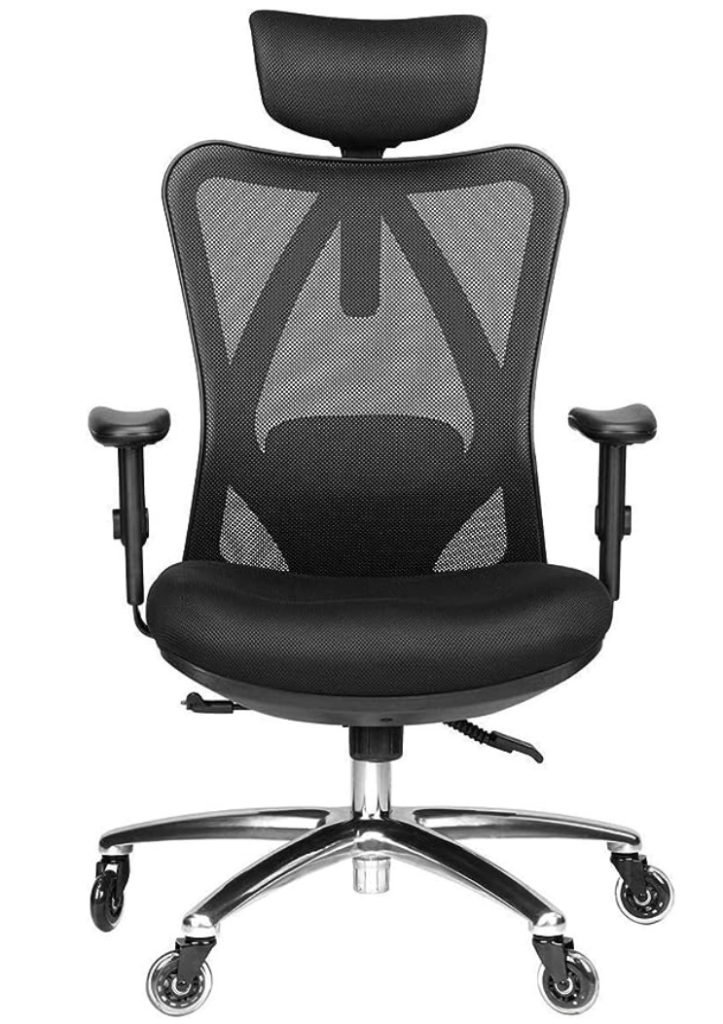
The Duramont Ergonomic Office Chair stands out in the crowd due to its exceptional blend of quality, comfort, and affordability. It is a testament to the fact that you don’t have to break the bank to secure a chair that caters to your specific needs.
Designed with cutting-edge adjustable features, this chair boasts of breathable mesh backing that’s not only supportive but also allows your back to breathe. This feature is beneficial during warmer months, providing a cooling effect and preventing sweat build-up.
It has a weight capacity of up to 330lbs.
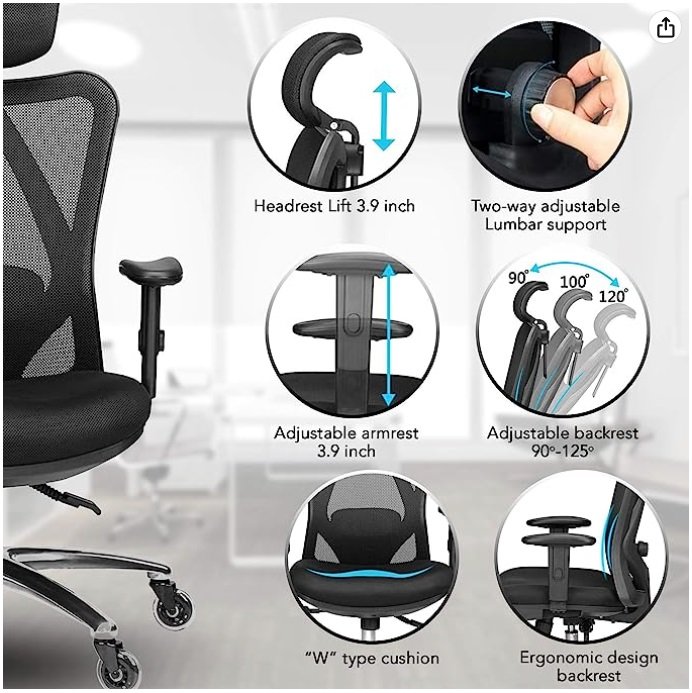

The standout feature of the Duramont chair is its ‘W’ Type soft but firm cushion seat, ideal for those that suffer from Piriformis Syndrome. It is not only supportive but also one of the more cushioned ergonomic chairs you can get.
However, the chair is not without its drawbacks. Its color choice is limited to black, and assembly can be a bit tricky for those not used to DIY tasks. But if you value ergonomic design, comfort, affordability, adjustability and build quality make this a perfect companion for those seeking relief from Piriformis Syndrome symptoms.
2. SIDIZ T80 Ergonomic Office Chair – Most Modern Comfort

The SIDIZ T80 Ergonomic Office Chair is a frontrunner for those who value modernity and top-notch materials. Its functional blend of style and comfort makes it a perfect addition to any workspace. With its unique patented tilting mechanism offering exceptional support, it’s ideal for those with Piriformis Syndrome or those who spend long work hours in the an office chair.
Furthermore, it comes a very well cushioned seat, featuring a layer of Memory Foam!

The SIDIZ T80 is built with a unique tilting mechanism that provides exceptional support, making it ideal for long work hours. It’s childs-play to adjust, and the high-quality materials make it a durable addition to any workspace.
It’s patented tilt pivots at the hips taking load away from the seat base (buttocks) and more onto the backrest.
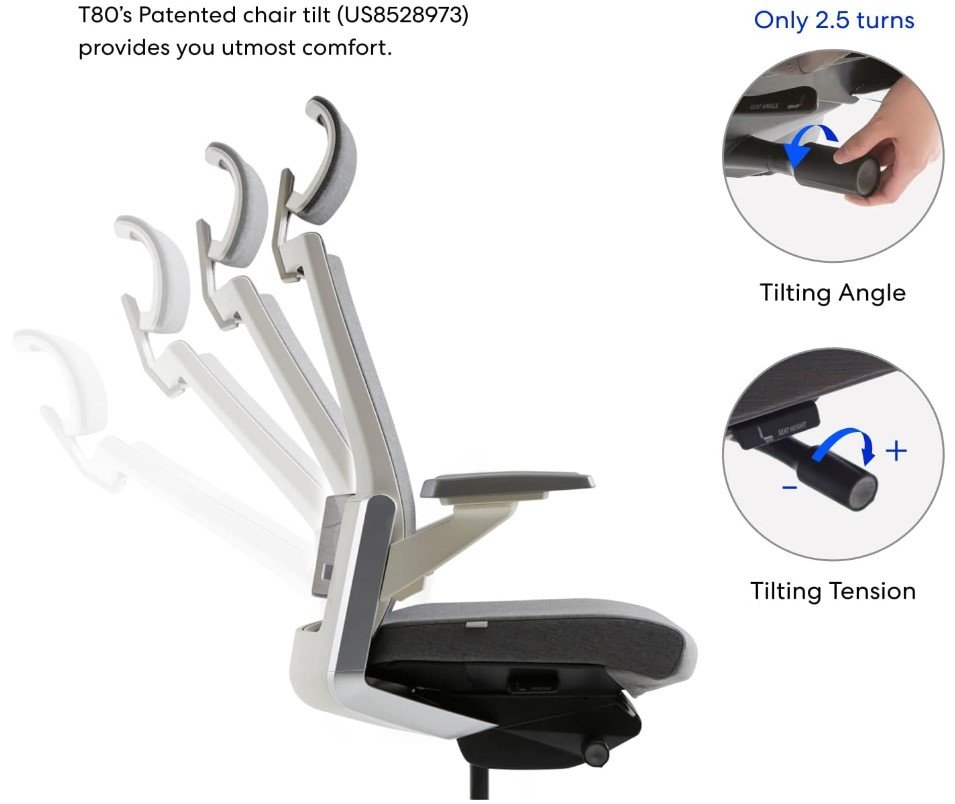
The downside of the SIDIZ T80 is its price. It is a significant investment, but the comfort and productivity it brings are well worth the expense, though compared with manufacturers like Herman Miller or Steelcase… this chair is an absolute bargain!
3. MOOJIRS Ergonomic Office Chair – Great Ergonomic Design
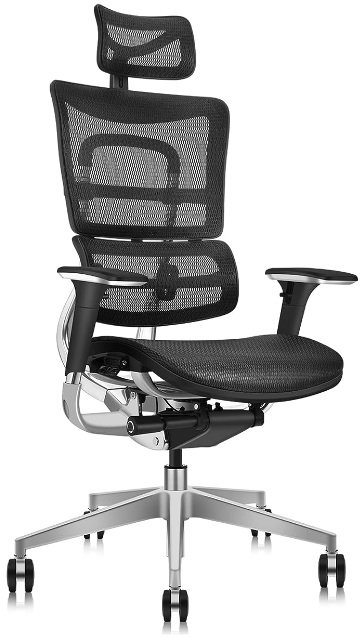
The MOOJIRS Ergonomic Office Chair pushes the comfort boundaries with its responsive ergonomic design and seven adjustable functions. Its 3D dynamic adjustment system caters to users of different sizes, while its 4D-MESH covering promotes airflow for temperature regulation.
Constructed with a durable aluminum alloy frame, the chair is praised for its easy assembly and comfort. The standout feature is its 3D dynamic adjustment system, it caters to users of different sizes, ensuring that everyone can find their perfect sitting position.
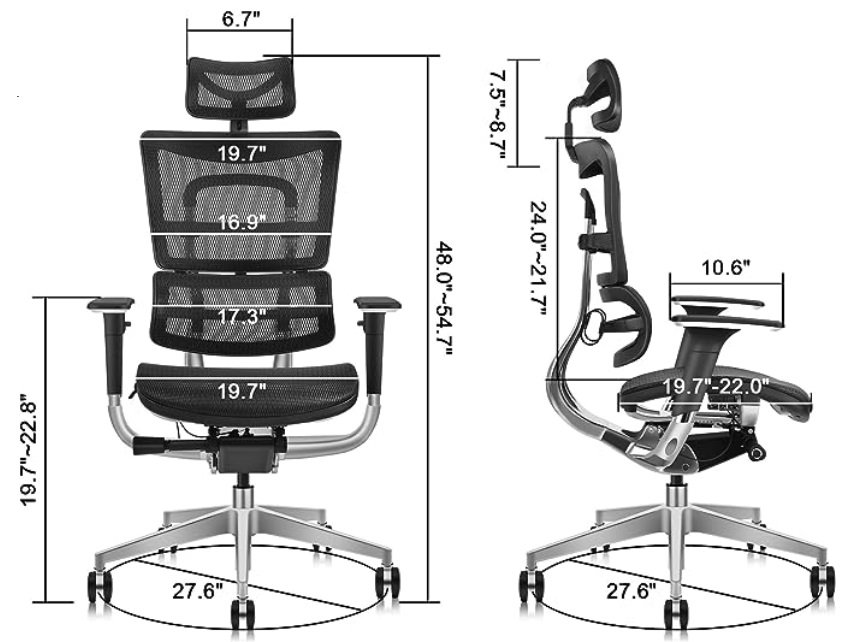

However, this chair is not without its drawbacks! Its price point is on the higher end, making it a significant investment, but if comfort and adjustability are your priorities, the MOOJIRS Ergonomic Office Chair is a top contender.
Frequently Asked Questions (FAQs)
To provide further clarity on the benefits of ergonomic chairs for Piriformis Syndrome sufferers, let’s address some frequently asked questions:
Q: Can an ergonomic chair completely cure Piriformis Syndrome?
While an ergonomic chair can provide significant relief and support for individuals with Piriformis Syndrome, it is important to note that it may not be a cure. An ergonomic chair is recommended in addition to other treatment/ therapy options – such as stretching exercises, physical therapy, and lifestyle modifications for optimal results.
Q: How do I choose the right ergonomic chair for Piriformis Syndrome?
When selecting an ergonomic chair consider adjustability factors – such as lumbar support, adjustable seat height, customizable armrests, seat depth adjustment, and overall comfort. Ideally test different chairs and consult with healthcare professionals, such as physical therapists or chiropractors who can provide personalized recommendations based on your specific needs.
Q: Can I use a regular chair with additional cushions instead of an ergonomic chair?
While adding cushions to a regular chair may provide some temporary relief, it is not a substitute for an ergonomic chair. Ergonomic chairs are designed to provide optimal support and promote healthy posture to minimize discomfort.
Q: How often should I take breaks from sitting in an ergonomic chair?
It is recommended to take regular breaks from sitting, regardless of the type of chair you use. Aim to stand up, stretch, and walk for at least a minute or two every half hour. Short movement breaks help alleviate muscle stiffness, improve blood circulation, and reduce the risk of discomfort and pain.
Q: Can an ergonomic chair prevent the development of Piriformis Syndrome?
While ergonomic chairs can help reduce the risk of developing Piriformis Syndrome by promoting proper posture and providing adequate support, they may not guarantee complete prevention. It is best to maintain a balanced lifestyle – incorporate regular exercise and practice good ergonomics in all aspects of daily life to reduce the risk of developing musculoskeletal disorders.
Q: Are there any specific exercises that can complement the use of an ergonomic chair for Piriformis Syndrome?
Yes, certain exercises can help strengthen the muscles surrounding the Piriformis muscle and promote flexibility. Some recommended exercises for individuals with Piriformis Syndrome include Piriformis stretches, hip stretches, and core strengthening exercises. Consult with a healthcare professional to determine the most suitable exercises for your condition.
Q: Can an ergonomic chair be used by individuals without Piriformis Syndrome?
Absolutely! Ergonomic chairs offer numerous benefits for individuals without Piriformis Syndrome as well. They promote healthy posture, reduce the risk of musculoskeletal disorders, and enhance overall comfort during prolonged sitting. Anyone who spends a significant amount of time sitting can benefit from using an ergonomic chair.
Q: Can I use an ergonomic chair at home as well as in the office?
Yes, ergonomic chairs are versatile and can be used in various settings, including home and office environments. Whether you’re working from home or spending leisure time at your desk, an ergonomic chair can provide the necessary support and comfort to minimize the risk of pain and discomfort associated with prolonged sitting.
To Wrap Up…
Ergonomic chairs have gained popularity in recent years for their ability to provide optimal support and comfort especially for individuals suffering from conditions like Piriformis Syndrome. If you’re experiencing pain and discomfort in your buttocks, lower back or hips, then finding the right chair can make a significant difference.
Investing in an ergonomic chair and following proper sitting guidelines, you’ll be able to significantly alleviate the symptoms of Piriformis Syndrome.
Remember to consult with healthcare professionals for personalized advice and consider incorporating regular breaks and exercises to complement the use of an ergonomic chair. With the right chair and mindful sitting habits, you can reclaim comfort and productivity in your daily life.

